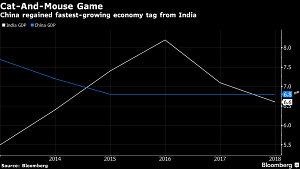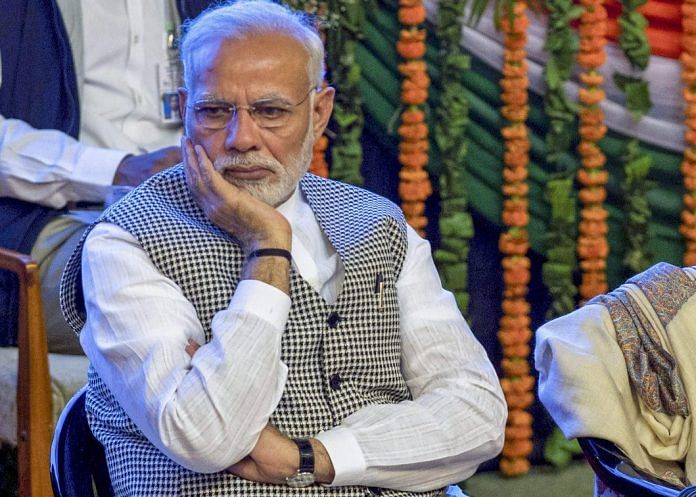Data showed a positive change in India’s economy after Modi tweaked the GDP calculation, but those gains got eroded after 2016’s sudden cash clampdown.
Prime Minister Narendra Modi completes four years in office on May 26. He’s used the time to give India its biggest tax reform, overhauled a century-old bankruptcy law, revived stalled projects and got the World Bank to say Asia’s No. 3 economy is a much better place to do business.
Still, all’s not well with the economy. Once-trusted state-owned banks are facing allegations of fraud, their soured-debt pile is larger than ever, investors are dumping Indian stocks and bonds amid a stronger dollar and U.S. Treasury yields. Foreign direct investment growth appears saturated after accelerating at a healthy pace in the initial three years under his watch.
Modi’s Bharatiya Janata Party, which swept to power in 2014 promising to tackle price rises, give high priority to job creation, eliminate scope for corruption and uplift the poor, has another year to deliver. So far, the results seem mixed on social as well as economic parameters. Here’s a look at how the economy has fared under Modi:
Gross Domestic Product
Data showed India’s economy was booming after Modi changed the way GDP was calculated. A sudden cash clampdown in November 2016 eroded those gains and the $2.3 trillion economy is forecast to grow at the slowest pace in four years in the fiscal year ended March. Rural India, home to about 70 percent of the country’s population, was the worst hit.
As Modi enters his final year in office, green-shoots are being seen and India is poised to replace China as the world’s fastest growing economy.
Trade Deficit
India’s love for gold and the spike in crude oil prices has kept the country’s trade in deficit and it’s widened under the BJP-led government. Despite frosty ties with China, India’s imports from there have risen and the gap has ballooned. India runs a trade surplus with the U.S. but that’s contributed to getting the country on the U.S. Treasury’s watch-list for currency manipulators.

Current Account Deficit
India has been running a current account shortfall. As Modi’s policies helped win record foreign direct investments, the economy came close to recording a surplus for the first time in more than a decade, but the gap has started widening again on skewed trade, making it more vulnerable to rising yields in the U.S. Modi needs to attract more dollars as India’s foreign reserves can give it a cover of only 10 months.
Fiscal Deficit
The glide path on the fiscal deficit helped Modi bring it down to a 10-year low and win a rating upgrade from Moody’s Investors Service. Crude oil prices, which largely helped keep his government’s finances in check in the initial years, could play spoilsport. India’s budget deficit is still one of the widest in Asia and Modi’s challenge is to narrow it further amid pressures to boost spending ahead of national polls in 2019.
The Modi government’s last full-year budget, announced in February, promised to spend more on healthcare and to boost farmers’ incomes, but these proposals are lacking in implementation details and remain a risk to the budget gap.
Inflation & Interest Rates
Retail prices under Modi largely remained benign in the last two years, thanks to moderate oil prices and good rainfall. However, consumer price inflation zoomed past the central bank target in November and faces upside risks from oil and the government’s expansionary policies.
The Modi administration advocated lower interest rates to jump start the economy after the 2016 cash ban-induced slowdown and as companies found themselves saddled with debt. The central bank hasn’t raised interest rates in the last four years — a period that saw the rate-setting panel come into being and the RBI becoming an inflation-targeting central bank. The latest turn of events has made the RBI hawkish and more economists expect a rise in interest rates as early as June. – Bloomberg



